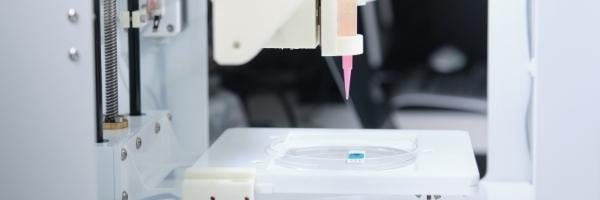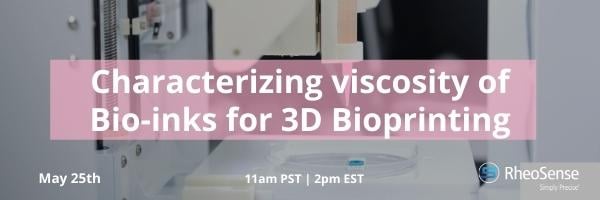Bio-ink 3D printing is an emerging technology due to its promise in regenerative medicine and tissue engineering. In this process, bio-inks are deposited on a build plate layer-by-layer to create 3D objects which may include living cells and extra cellular matrix (e.g., hydrogels). Applications consist of cartilage and retina scaffolds, vascular constructs, cardiac tissue, bone production and skin regeneration. The three most commonly used manufacturing techniques for 3D bioprinting are droplet-based, laser-assisted, and extrusion-based technologies.

Each of these techniques require bio-inks with desirable viscosity to achieve high printing resolution, shape fidelity and cell viability. For example, droplet-based bioprinting is compatible with low viscosity bio-inks. However, in extrusion-based bioprinting, a wider range of bio-inks from low to high viscosity can be employed. During a typical printing process, the bio-ink experiences different shear rates. Accordingly, characterizing viscosity over a wide range of shear rates relevant to the printing process is crucial for successful design and development of bio-inks. For example, when it is extruded through a small nozzle it is subjected to relatively high shear rates and must exhibit shear thinning. However, upon deposition, it should regain shape fidelity and mechanical integrity.
Download our application note: Characterizing the Viscosity of Sodium Alginate for Bio-ink Applications" for the full viscosity analysis of bio-inks at different concentrations and over a wide range of shear rates.
Hydrogels are non-toxic, biocompatible polymers that have been extensively used as the base material in bioprinting. New bio-inks can be designed by mixing various materials to improve the biological and rheological properties and overcome the limitations of single component bio-inks. Some of the most commonly used polymers in bioprinting include alginates, hyaluronic acid, gelatin, collagen, agarose and carrageenan.
Download our webinar recording, showing how we use the RheoSense VROC® initium one plus to measure the viscosity of bio-inks at different concentrations and over a wide range of shear rates. We also aim to demonstrate the effect of temperature, pH changes, and ionic strength on the viscosity and shear thinning behavior of bio-inks.
Written by: Soheila Shabaniverki, PhD, RheoSense Application Scientist



